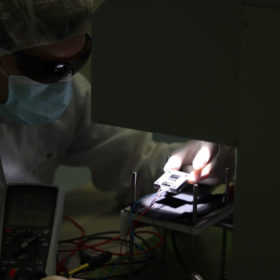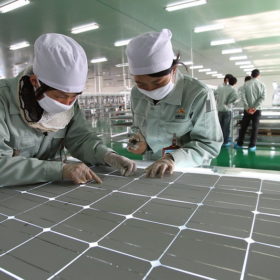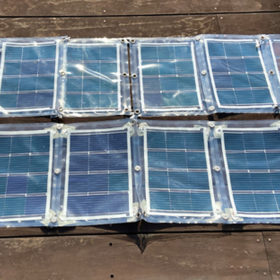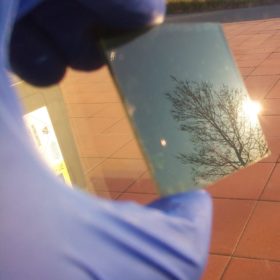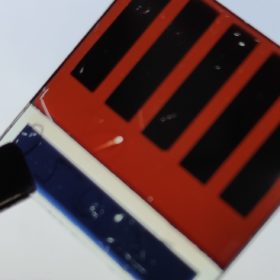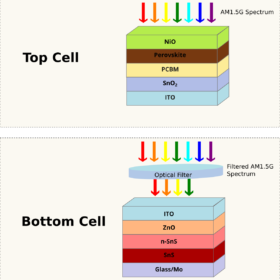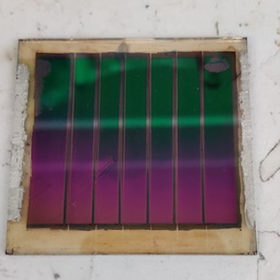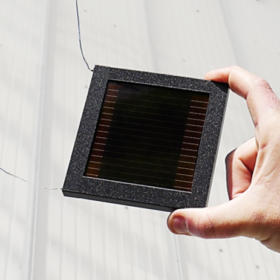Ultra-thin perovskite-organic tandem solar cell with 24.0% efficiency
Researchers in Germany have built a perovskite-organic solar cell with low interfacial losses and a high open-circuit voltage. The device achieved an open-circuit voltage of 2.15 V, a short-circuit current of 14.0 mA cm−², and a fill factor of 80%.
AI method learns from experienced staff on perovskite solar production lines
Academics from MIT and Stanford who have posited a new production method for perovskite solar cells have also developed a machine learning system which benefits from the experience of seasoned workers – and they’ve posted it online for anyone to use.
NGK Insulators enters perovskite PV module business
NGK Insulators has invested an undisclosed sum in Enecoat, which develops perovskite solar cells via a wet process based on organic chemistry, a low-temperature coating process, and roll-to-roll printing.
Low-temperature perovskite solar module with 19.1% efficiency
Researchers have developed a PV module with with an efficiency of 20.72%, based on tin oxide (SnO2) as an electron transport layer, an organometal halide perovskite layer, organic halide salt phenethylammonium iodide (PEAI) as a passivation agent, and Spiro-OMeTAD as the hole transport layer (HTL).
Carbon-based, HTL-free perovskite solar cells with 26% efficiency
An international research team has designed a carbon-based perovskite solar cell without a hole transport layer. Two plasmonic nanoparticles – Ag@SiO2 and SiO2@Ag@SiO2 – were added to the cell photoactive layer, in addition to a copper(I) thiocyanate (CuSCN) interlayer at the perovskite-carbon interface.
Tin perovskite solar cell with operational stability of over 1,300h
Scientists in Spain have built a 10.61%-efficient tin perovskite solar cell with improved open-circuit voltage and stability. The device was fabricated with formamidinium tin iodide (FASnI<sub3), sodium borohydride (NaBH4) as a reducing agent, and a bulky secondary ammonium cation of small size known as dipropylammonium iodide (DipI).
Double-junction perovskite-tin sulfide PV cell design with up to 28.92% efficiency
An Iranian-Italian research group has simulated a double-junction tandem solar cell based on perovskite and tin sulfide. They said that it can reach an efficiency rating of between 22.9% and 28.92%.
Terahertz, microwave spectroscopy for more accurate PC cell assessments
A German research group has used spectroscopic methods based on terahertz or microwave radiation and has discovered that they might help with more precise assessments of the characteristics and performance of solar cells. Their proposed approach purportedly enables the evaluation of maximum possible efficiency levels for emerging materials such as perovskites in solar cells.
Semi-transparent perovskite solar cell with 13% efficiency, 27% transparency
Developed for applications in BIPV, vehicle-integrated solar and smart glasses, the solar cell was built with an ultra-thin, semi-transparent, triple-cation perovskite film and gold nanorods (Au NRs). The device achieved an open-circuit voltage of 1097.1mV, a short-circuit current of 17.11mA/cm2 and a fill factor of 73.12%.
Mini perovskite solar module with 40 sq cm aperture area, 17% efficiency
The 19.2%-efficient perovskite cells used in the module rely on an electron layer based on tin oxide that was deposited via chemical bath deposition. This technique, according to the device’s creators, has made it possible to have a relatively small drop in efficiency from small cells to the 40cm2 module.
